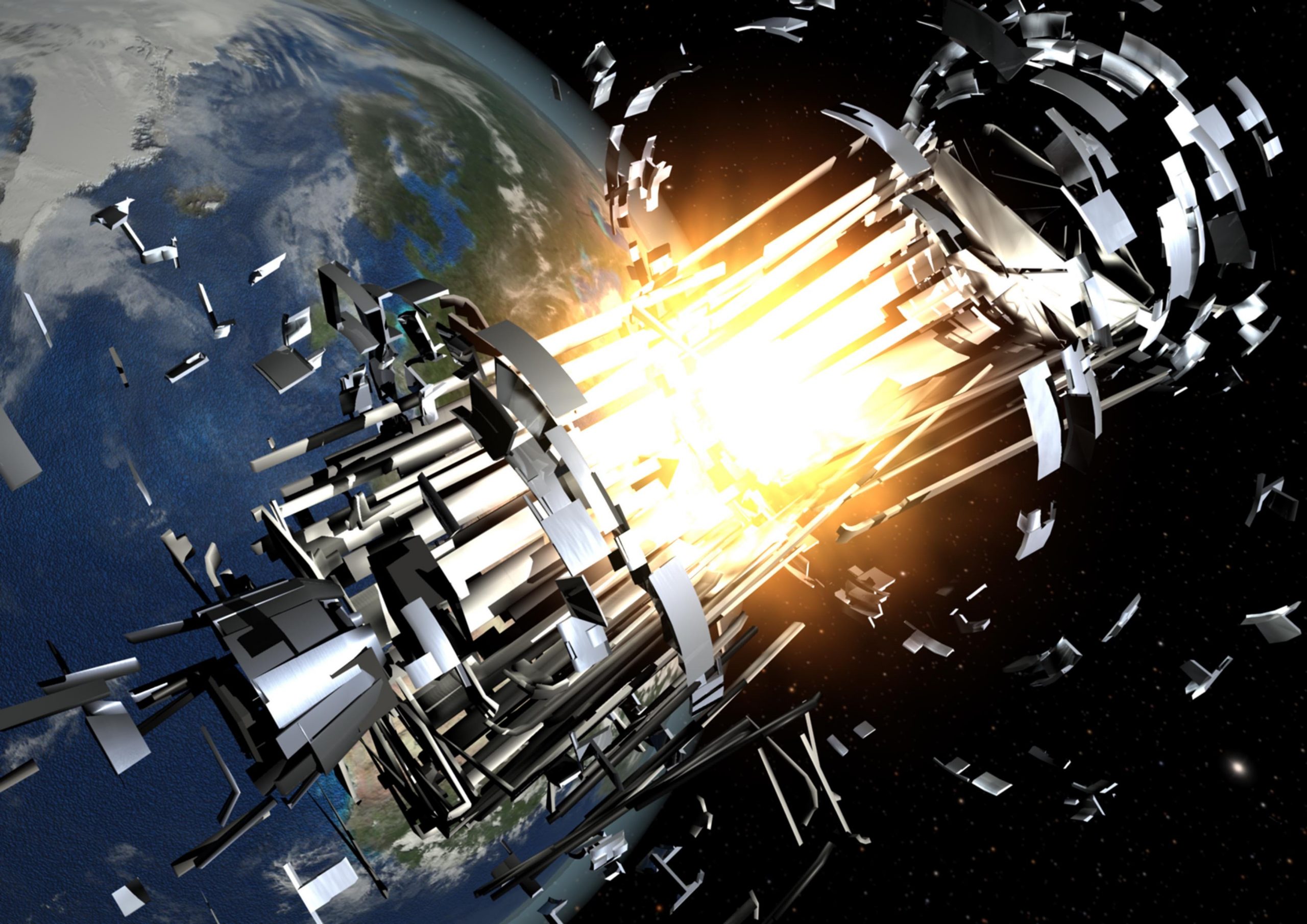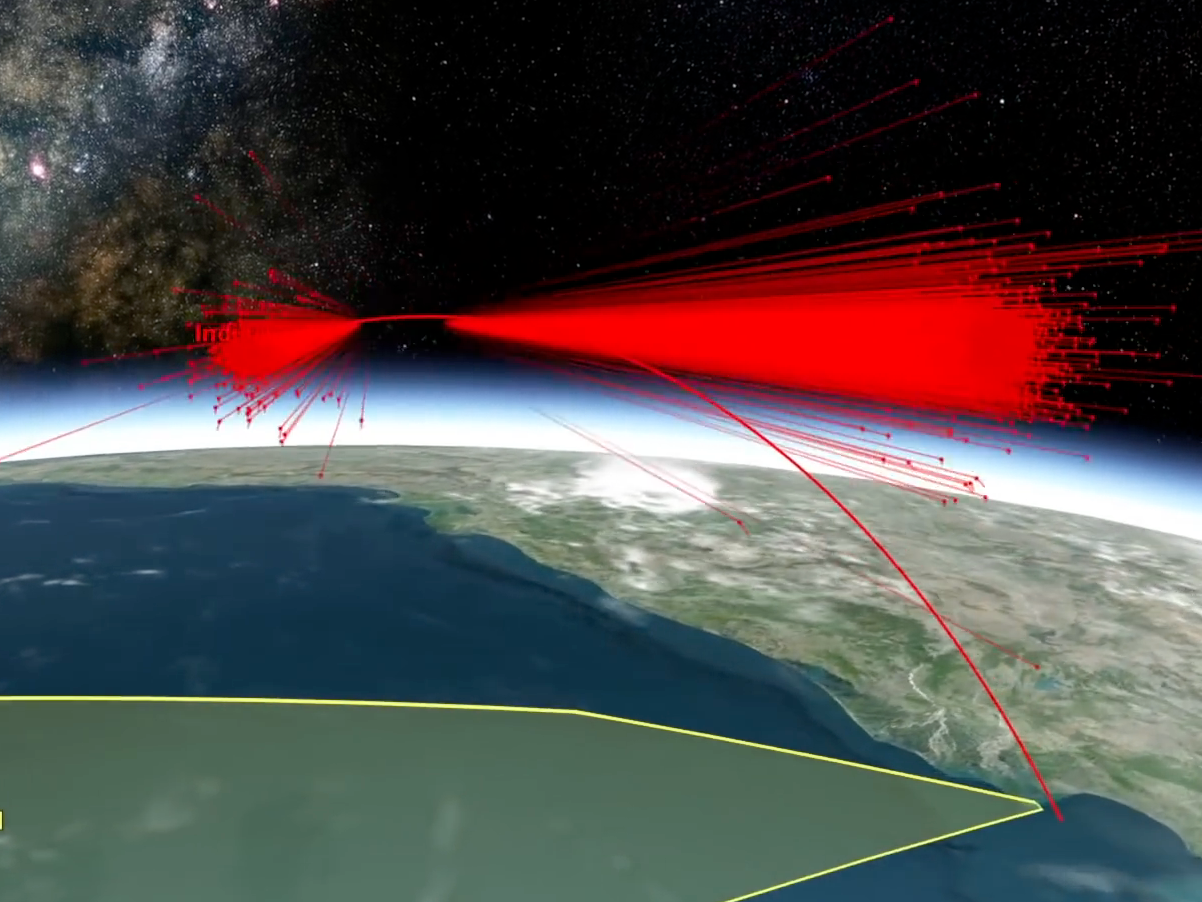
Astroscale
- Japanese company Astroscale launched a magnetic satellite as a demo of a space junk clean-up effort.
- Space junk rockets around Earth faster than bullets, threatening satellites and the space station.
- Dead satellites are the greatest threats, but there are few efforts to get rid of them.
- See more stories on Insider's business page.
Earth's orbit desperately needs someone to take out the trash. A Japanese company is trying to keep the problem from getting worse.
The company, called Astroscale, has designed a spacecraft with a magnetic plate that can attach to dead satellites – as long as they have the other side of the magnet. That enables it to pull the satellites into a freefall, burning up both the spacecraft and its satellite passenger in Earth's atmosphere.
The first version of this technology is called the End-of-Life Services by Astroscale demonstration mission, or ELSA-d, and it launched from Kazakhstan on Monday. The spacecraft carries a fake piece of "space debris" with the necessary magnetic plate built in. The plan calls for ELSA-d to release this fake debris then practice grabbing it while both are in orbit.
In the future, satellite companies could build this type of magnetic docking plate into their own spacecraft and hire Astroscale to remove satellites from orbit when they go defunct.
"This is an incredible moment, not only for our team, but for the entire satellite servicing industry, as we work towards maturing the debris-removal market and ensuring the responsible use of our orbits," Nobu Okada, Astroscale Founder and CEO, said in a statement.
In other words, as the company tweeted after launch: "Let the era of space sustainability begin."
However, existing space junk doesn't have built-in magnetic plates compatible with Astroscale's new spacecraft. According to the European Space Agency, more than 2,400 dead satellites and 100 million bits of debris are already circling Earth - space junk that ELSA-d cannot clean up.
As Earth's orbit gets more and more congested, this space trash becomes more likely to crash, and those collisions can then send new clouds of metal chunks careening around the planet. Over time, such collisions could create a thick belt of debris that, in a worst-case scenario, may cut off access to outer space.
Space collisions create 'gunshot blasts' of high-speed debris

ESA
Even tiny bits of space debris are dangerous, since they zip around the planet at roughly 10 times the speed of a bullet. Last year, the International Space Station had to maneuver away from space debris on three occasions, since a collision could endanger the astronauts on board.
But the largest pieces of space junk - the dead satellites and discarded rocket husks - pose the greatest collision risk.
In October, a defunct Soviet satellite and an old Chinese rocket body passed alarmingly close together. Since nobody could control either spacecraft, there was no way to prevent a collision.
Luckily, the objects did not crash. But if they had, astronomer Jonathan McDowell calculated it would have produced an explosion roughly equivalent to detonating 14 metric tons of TNT and sent chunks of spacecraft rocketing in all directions.
Prior to that, in January 2020, two dead satellites almost crossed paths and exploded into hundreds of thousands of bits of debris.
If they'd collided, that would have been like replacing "two satellites with essentially two shotgun blasts of debris," Dan Ceperley, the CEO of satellite-tracking company LeoLabs, told Insider at the time.
Scientists have observed real collisions in space as well. In 2007, China tested an anti-satellite missile by obliterating one of its own weather satellites. Two years later, one American and one Russian spacecraft accidentally collided. Those two events alone increased the amount of large debris in low-Earth orbit by about 70%.
Then when India conducted its own anti-satellite missile test in 2019, the explosion created an estimated 6,500 pieces of debris larger than an eraser.

Analytical Graphics Inc.
All in all, more than 500 such "fragmentation events" have created nearly 130 million bits of debris in Earth's orbit.
Out-of-control orbital debris could cut off humans' access to space
If the space-junk problem gets extreme, a chain of collisions could spiral out of control and surround Earth in a practically impassable field of debris. This possibility is known as the Kessler syndrome, after Donald J. Kessler, who worked for NASA's Johnson Space Center and calculated in a 1978 paper that it could take hundreds or even thousands of years for such debris to clear enough to make spaceflight safe again.
"It is a long-term effect that takes place over decades and centuries," Ted Muelhaupt, who leads The Aerospace Corporation's satellite system analysis, previously told Insider. "Anything that makes a lot of debris is going to increase that risk."
The sheer number of objects in Earth's orbit may already be having a Kessler-like effect. Experts say that space congestion has gotten significantly worse since companies like SpaceX began launching large fleets of internet satellites into orbit.
"This has a massive impact on the launch side," Rocket Lab CEO Peter Beck told CNN Business in October. He added that rockets "have to try and weave their way up in between these [satellite] constellations."
Astroscale aims to help ensure that dead, uncontrollable satellites don't wind up lurking inside those constellations.
Some companies may clean up old space junk
A few companies have already expressed an interest in or commitment to cleaning up some existing space junk.
ClearSpace, based in Switzerland, recently signed a contract with the European Space Agency to remove part of an old Vega rocket from orbit in 2025. Airbus, meanwhile, has tested satellite-capture methods using a harpoon and a net.
Astroscale's demo mission aims to test its magnet strategy. Shortly after separating from its "space junk" prototype, ELSA-d will try to re-capture it. If that basic maneuver goes well, the spacecraft will try more complicated tasks: Astroscale will instruct the debris prototype to tumble, spinning like a dead satellite normally would. That will force the ELSA-d spacecraft to assess it target and line up with the prototype's docking magnet.
Once the demonstration is done, the plan is for ELSA-d and its captured "debris" to plunge into the atmosphere to meet a fiery demise.
No company so far has a large-scale space clean-up in its sights, though.
SpaceX President Gwynne Shotwell has said that the company's mega-spaceship, Starship, could one day be put to the task. But for now, the number of objects in Earth's orbit is growing every year.
